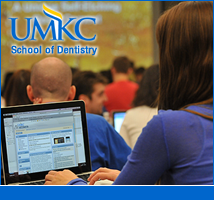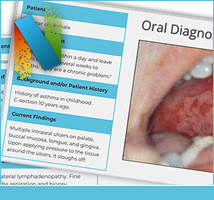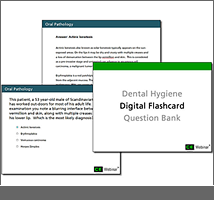
INBDE Review Course
The INBDE Review Course is a professor-developed, case-based review course focused on preparing students for the new Integrated National Board Dental Exam. It utilizes adaptive learning technology and an extensive reporting tool to provide a personalized studying method.

Digital Dental Notes
The Digital Dental Notes is an integrated boards question bank with an eLibrary for quick reference. It has been developed by Dr. James Lozier, the founder and creator of the Dental Decks. There are 1000 case-based questions and 1000s more standalone questions.

Scriptum CMS
The Scriptum Case Management System is a new platform that dental schools can use to store and maintain a repository of all cases. This platform allows faculty to write case-based questions in order to provide dental students with a complete and practical approach to learning.
Track Your Knowledge Base
Making your review process as efficient as possible requires an understanding of what you know and what you don’t know. This includes tracking your guesses. This is the key to developing a strategy as you begin reviewing for your exam. Learn how to study smarter.

Quality of our Content
The key to a good review course or product is in the quality of the content. That’s why we utilize so many professors to develop our content – people that teach this content full-time. Most of them have authored textbooks and research papers. Many have previously written exam questions!

Trusted by Dentals Schools!
UMKC School of Dentistry’s INBDE Review Courses have been developed by over 30 full-time professors. We’ve developed a strategy to help students prepare for their boards using a practical approached based upon each student’s individual knowledge base.
- Where to start
- Understanding the test
- Timing is everything!
These lectures helped me so much. I am going back to make little cheat notes for the test!
Anonymous dental hygiene student









